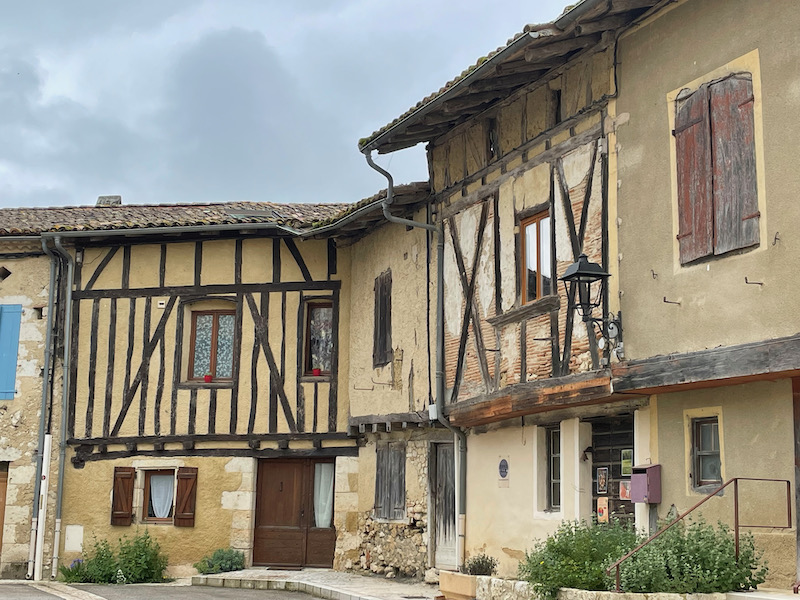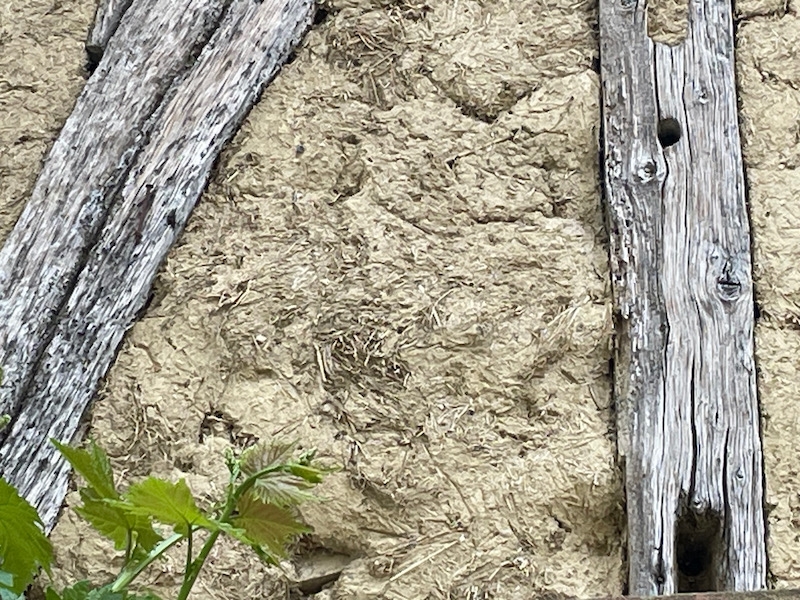Our Blog - Sarrant, France
The origin of Sarrant goes back to Antiquity. This stopping place on the Roman road from Toulouse to Lectoure appears on the maps of the Roman Empire under the name of Sarrali. The castrum of Sarrant was founded in the 13th century, and its charter of customs dates from 1265. It is a very small, circular walled town with 2 concentric rings of dwellings surrounding a church. The houses on the outside ring once served as ramparts surmounted by several wooden sentry boxes connected by a walkway. The town was surrounded by wide fish-filled ditches until the middle of the 19th century, when the ditches were filled in. We visited on a May 1st, Labor Day in France, which is one of the most important holidays in France. While there wasn't much commerce here, anything that WAS here was closed for the day, so the town was VERY quiet and only took about 5 minutes to walk through everything.
Our first stop was at the lavoir, or ancient wash-house. Built in 1908, it was fed by the same stream that fed the ditches surrounding the village ramparts until the 19th century. The building that you see today was remodeled in 1989. In the past, the linen was piled in a wooden vat, then covered with a coarse hemp cloth on which was spread a thick layer of wood ash. Boiling water was poured over and collected at the base of the vat. This solution was re-warmed and poured again on the linen and repeated several times. The wash house was mainly used for rinsing which required a large quantity of water. Equipped with beaters, the washerwomen beat the wet laundry spread out on an inclined wooden or stone surface before throwing it back into the water. Once well rinsed, it was wrung out, working in pairs to twist the most important parts.
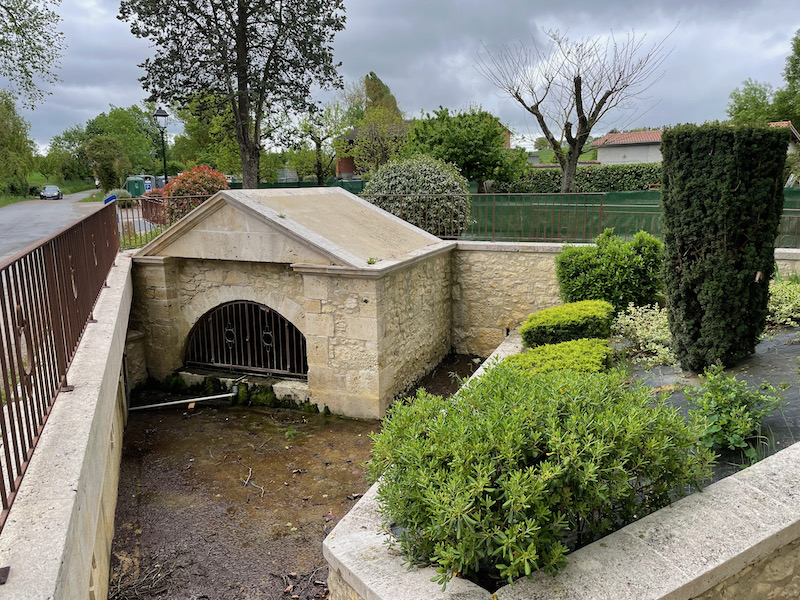
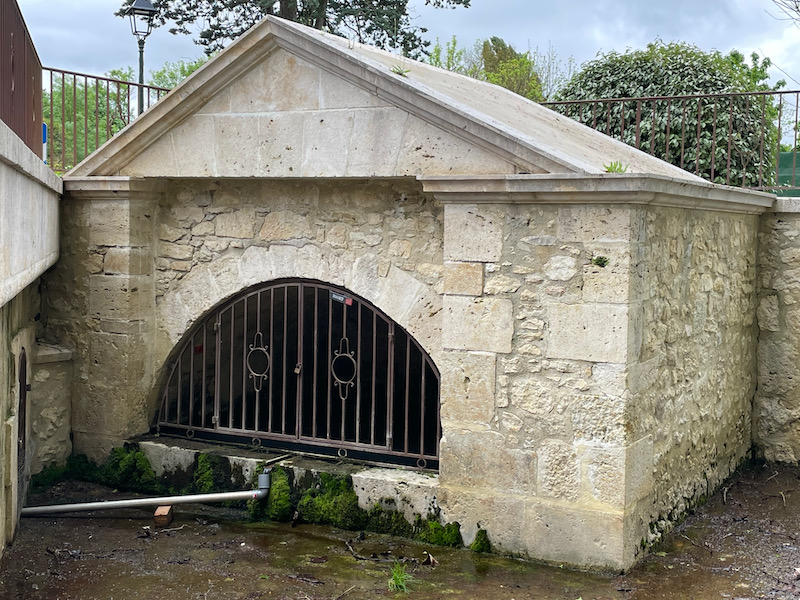
Just next to the entry of the village is the Jardin Medieval, which does NOT date to medieval times :-) It was created in 1998 by a set of volunteers, and is located on the site of the old moat. The layout of the garden is inspired by monastic plans from the Middle Ages. There is a basin in the center, symbolizing the fountain of life where the 4 rivers of paradise meet, represented by 4 paths arranged in the shape of a cross. There are 4 small gardens, each with different types of plants. There are medicinal plants that would have been used by the monks to make remedies, a vegetable garden, an herb garden, and the garden of Mary with flowers to decorate churches and during religious festivals. At the bottom of the garden stands an ancient carved stone crucifix.
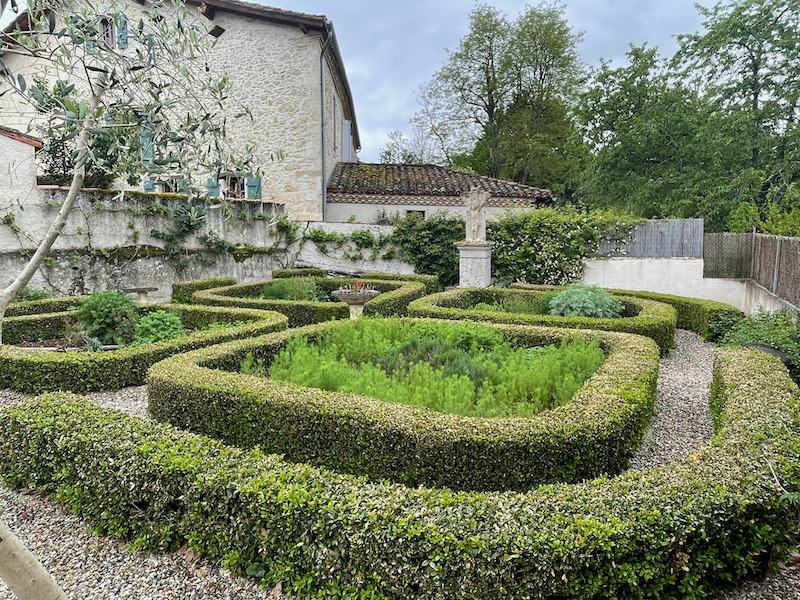
We entered town through the 14th-century La Tour Porte, the only entrance to the village until the middle of the 19th century. It collapsed in the middle of the 18th century and was rebuilt at the start of the 19th century, when the drawbridge was replaced by a stone bridge.
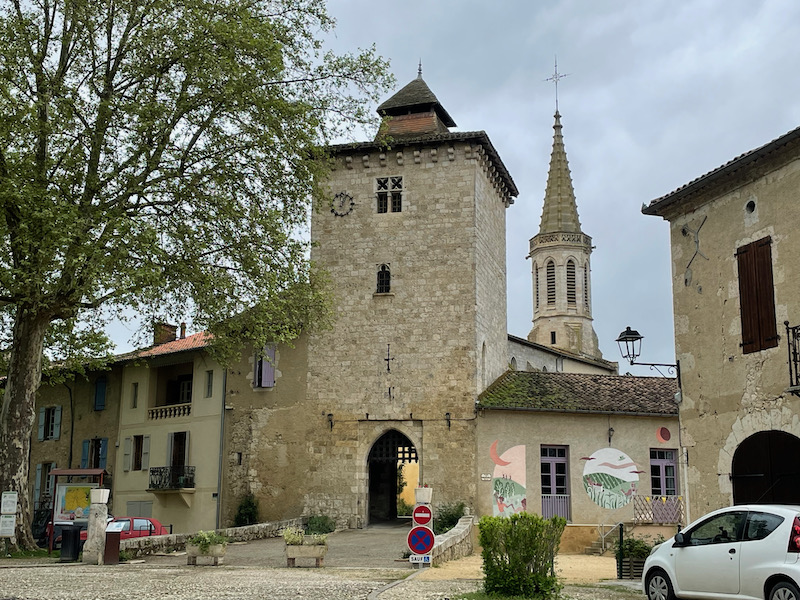
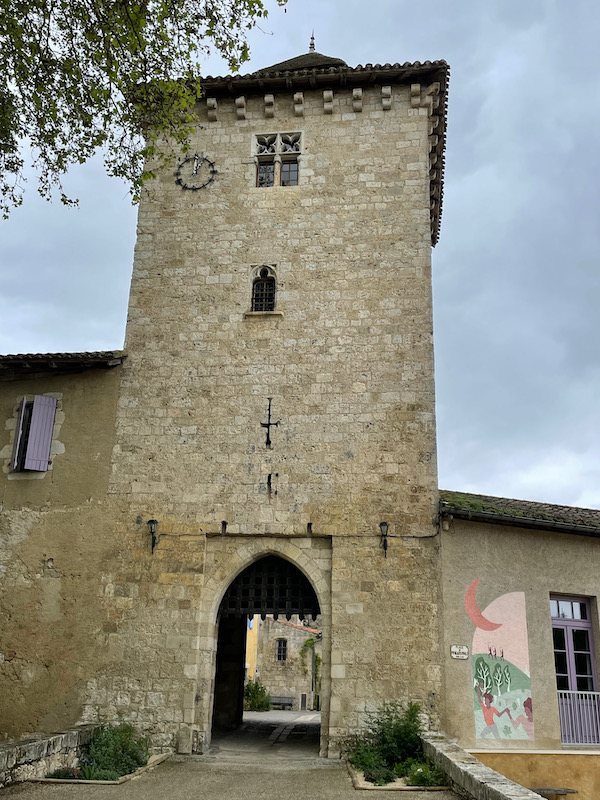
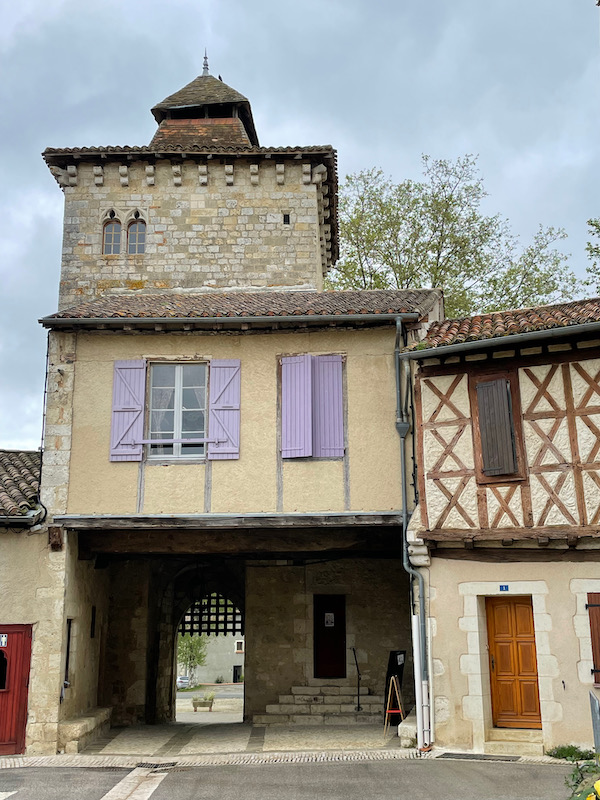
This is a door that is, well, unique and bizarre at the same time.
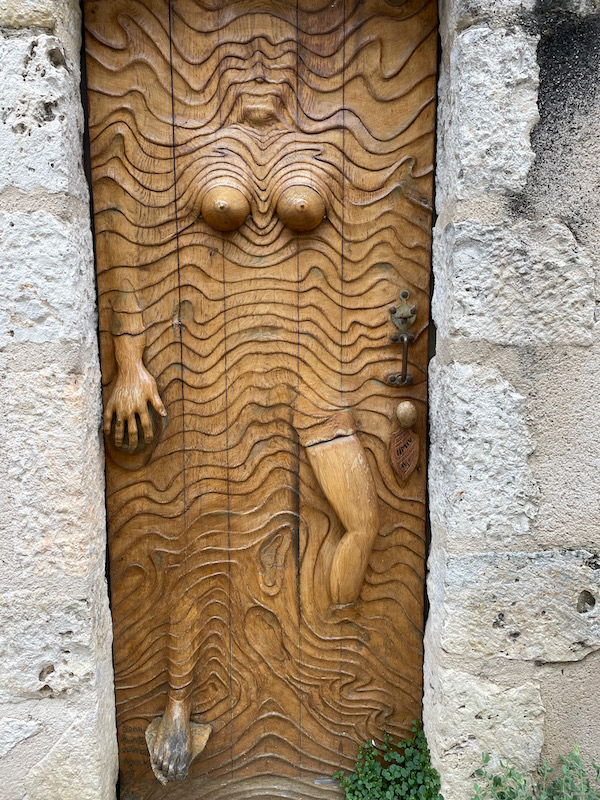
The church of Saint Vincent, built of cut stone in the southern Gothic style, was largely built between the middle of the 16th century and the beginning of the 17th century. The construction of the 4 southern-side chapels ended in 1568 with the construction of the chapel of the baptismal font. The Wars of Religion interrupted the work, which did not resume until 1606 with the construction of the two North-East chapels, the raising of the nave, and the construction of the vaults of the two East bays. The building was remodeled in the 19th century when the bell tower was built, the spire of which, covered with plant crosiers, is surrounded by a gallery. The 2 north-west chapels and the vaults of the 2 west bays of the nave completed the project 3 centuries later. Unfortunately, it was closed today :-(
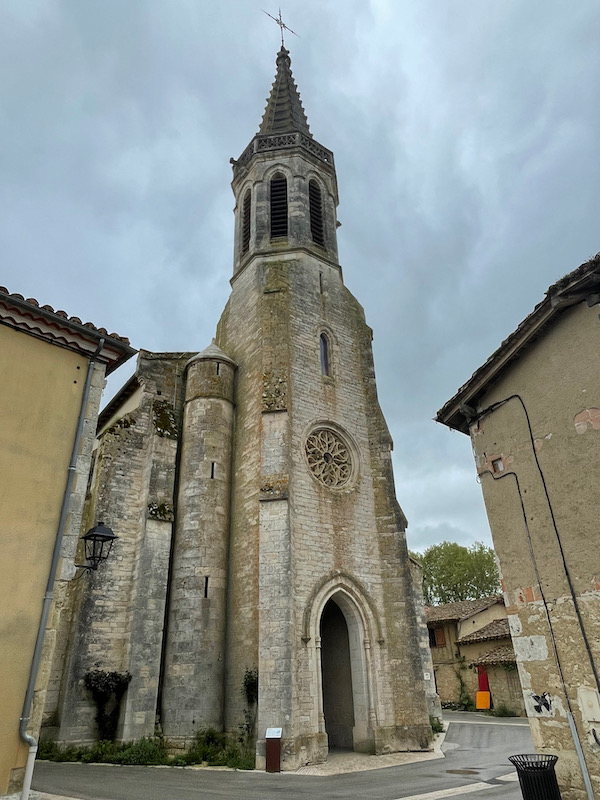
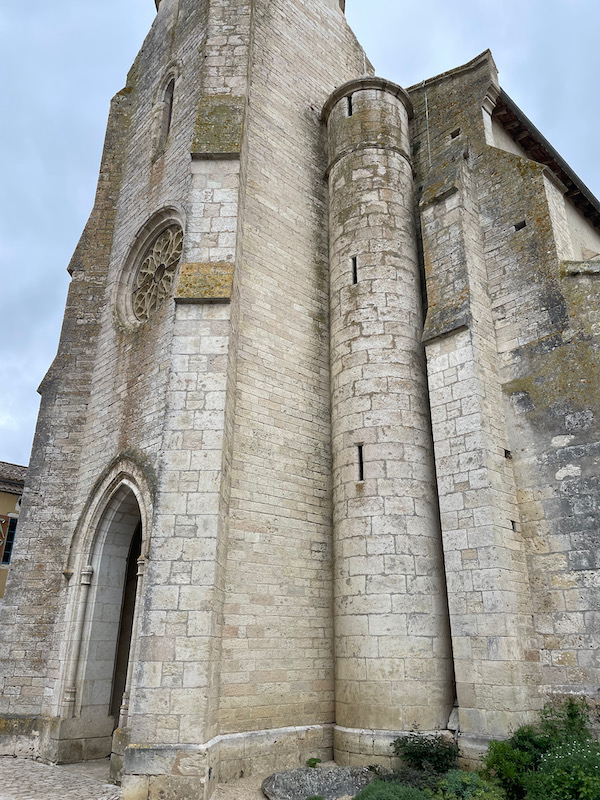
Some houses in the village date from the 16th and 17th centuries as evidenced by their corbels intended to save space. There are quite a few that retain their half-timbered structure, and I tried to get a close-up to show that some used mud and grass (called "cob") to fill in between the timbers.
